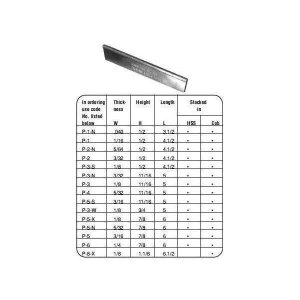Ok, every one, lets back up and take a deep breath.
Parting is not rocket science, it just requires care be taken to ensure that everything is as rigid as possible, and the tool is aligned as perfectly as possible.
The tool holder design is not flawed or a bad design. This design has been in use for as long as there has been lathes. Even the old fashioned rocker posts used a similar clamping arrangement. It is a time tested and proven method that works on everything from low speed, low HP manual lathes to high speed CNC turing centers.
The tool MUST be clamped vertically, not on it's sides. This is to prevent vertical vibration. Horizontal vibration is not near as much of an issue, it just gives a bad surface finish.
If you do as I described in my first post, you will not have an issue getting the tool clamped properly in the holder. just lightly tighten the wedge, slide the tool in and out, tighten a bit more, slide, then snug it down. This will ensure the flat faces of the top and bottom are flat in the holder.
The tool is not too thin. Light weight lathes requires a thin tool, they simply do not have the horsepower to run a wide blade. On my old lathe, my parting problems disappeared when I went to a thinner tool. A thick tool on a light machine will be nothing but problems because the machine is not rigid enough to support a heavy cut.
Just to prove the point. I dug up my old parting tool from my old lathe. It is even thinner than the one the OP is using, and it is not tall enough to fit in my BXA holder. I had to put a narrow parallel under the tool to get the wedge to clamp it up. The tool is a cheap Shars parting tool. I touched up the edge on the grinder, I did not hone it. In fact I even ground it slightly off square just to prove that it does not matter.
My QCTP came from Quality Machine tools. It is a no-name Chinese thing, that is quite frankly a piece of junk. My old Bostar was a far better post.
I then parted off a piece of 2" 4140 cold roll. The work is only centered by eye, and is probably about 0.005" off center. I did this just to make it more interesting because making the initial plunge can be hard on the tool if you are cutting into the mill surface.
I have 1 1/8" stick out on the tool. I ran the lathe at 135RPM because this is the typical low speed for many lathes.
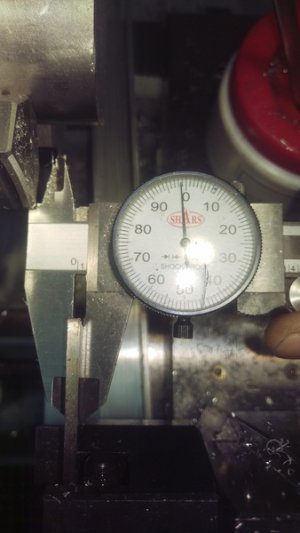
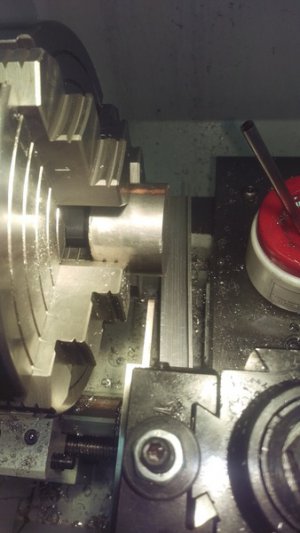
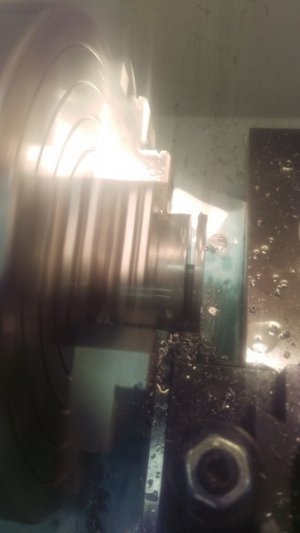
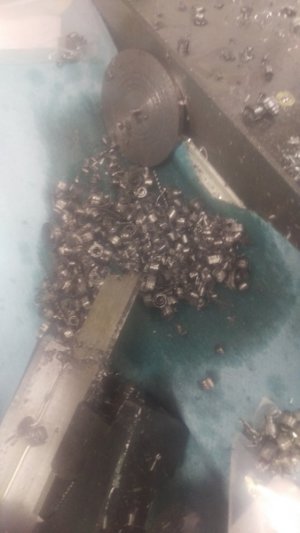
You can see the crappy surface that comes from the tool being ground out of square.
You can see the nice quality chip I get. I just keep pushing the tool into the work until I get this chip.
You can also make out the parallel under the tool in some of the pics.
I even stopped the part to answer the phone about half way through.






